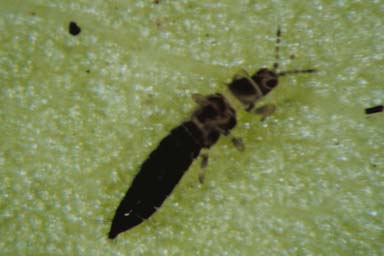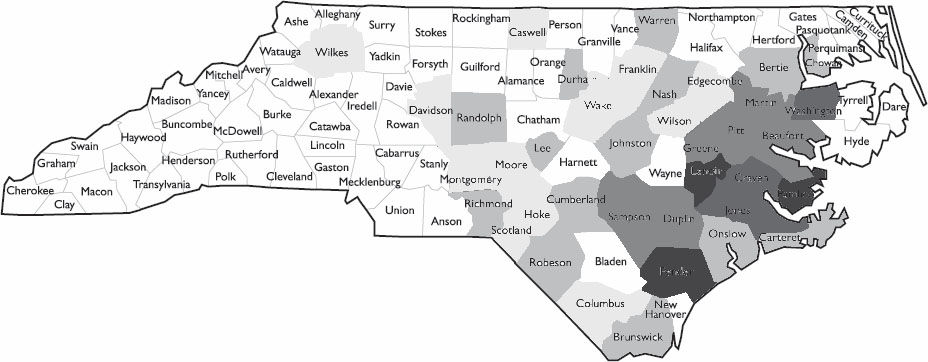Insects – Tobacco Thrips
go.ncsu.edu/readext?66310
en Español / em Português
El inglés es el idioma de control de esta página. En la medida en que haya algún conflicto entre la traducción al inglés y la traducción, el inglés prevalece.
Al hacer clic en el enlace de traducción se activa un servicio de traducción gratuito para convertir la página al español. Al igual que con cualquier traducción por Internet, la conversión no es sensible al contexto y puede que no traduzca el texto en su significado original. NC State Extension no garantiza la exactitud del texto traducido. Por favor, tenga en cuenta que algunas aplicaciones y/o servicios pueden no funcionar como se espera cuando se traducen.
Português
Inglês é o idioma de controle desta página. Na medida que haja algum conflito entre o texto original em Inglês e a tradução, o Inglês prevalece.
Ao clicar no link de tradução, um serviço gratuito de tradução será ativado para converter a página para o Português. Como em qualquer tradução pela internet, a conversão não é sensivel ao contexto e pode não ocorrer a tradução para o significado orginal. O serviço de Extensão da Carolina do Norte (NC State Extension) não garante a exatidão do texto traduzido. Por favor, observe que algumas funções ou serviços podem não funcionar como esperado após a tradução.
English
English is the controlling language of this page. To the extent there is any conflict between the English text and the translation, English controls.
Clicking on the translation link activates a free translation service to convert the page to Spanish. As with any Internet translation, the conversion is not context-sensitive and may not translate the text to its original meaning. NC State Extension does not guarantee the accuracy of the translated text. Please note that some applications and/or services may not function as expected when translated.
Collapse ▲Biology
Tobacco thrips (Frankiella fusca) are the most important vector of tomato spotted wilt virus (TSWV) in tobacco. Tobacco thrips have multiple generations per year and feed on a wide range of plants. In order to transmit TSWV, thrips must feed on infected hosts as larvae.
Thrips and TSWV
Losses due to TSWV vary greatly depending on year and location, with losses since 2000 in NC alone ranging from several million to over 45 million dollars per year. In addition to killing young plants, TSWV reduces the uniformity, yield, and leaf quality of infected plants that are not killed. Tools for managing TSWV in tobacco are limited and must be applied before TSWV spreads into the crop. Imidacloprid (Admire Pro®) and Actigard® applied to transplants in the float house are the most commonly used TSWV management measures. However, the level of TSWV control provided by these materials has been inconsistent.
Field studies at multiple sites in NC and GA have confirmed the value of using both Admire Pro® and Actigard® in reducing losses to TSWV. Results demonstrated that condition of the plants when float bed applications of either product were made influenced the degree of phytotoxicity, with the highest and most persistent levels of phytotoxicity always associated with the weakest transplants. Phytotoxic effects of pre-transplant applications of Admire Pro® and Actigard® can be minimized by applying them separately at least 1 day apart. These studies confirmed that the greatest reduction in TSWV can be obtained when Admire Pro® (applied as a float tray treatment) and Actigard® are used, and demonstrated that the most effective application timing of Actigard® varies with year and location depending on when the spring flight of tobacco thrips and spread of TSWV occur.
Field trials conducted by NCSU entomologists for the last 3 years and Clemson entomologists for the last 2 years have demonstrated that Actigard® treatments timed to thrips flights lower TSWV incidence.
NC State University entomologists and climate scientists have developed a website designed to predict tobacco thrips (Frankliniella fusca) flights and make management recommendations to suppress tomato spotted wilt virus (TSWV) in tobacco. The TSWV and Thrips Exposure Tool for Tobacco uses temperature and precipitation data to predict tobacco thrips flight timing.
The TSWV and Thrips Exposure Tool for Tobacco should be used by tobacco growers in high risk TSWV areas in North Carolina. An area is considered high risk if it has a historical average TSWV incidence over 10%.
To use this tool, growers in high TSWV risk areas enter their location, tobacco type grown, anticipated transplant date, and any known or planned greenhouse treatments. The models then predict, based on grower location, if tobacco thrips are expected to fly within the next 2 weeks. If thrips flights are predicted, then the website suggests possible management options. For example, if the predicted flight is within 2 weeks of transplant, a greenhouse treatment of Actigard® will likely result in the greatest TSWV suppression. On the other hand, if the thrips flight is predicted 3 to 4 weeks after transplant, a field treatment of Actigard® may be most effective. Finally, if thrips are not expected until 8 weeks after transplant, treatment is likely not needed. Of course, whenever using pesticides, always read and follow the label. The label is the law!
Thrips flight predictions are only available 2 weeks out at this time due to forecast data available. As weather forecasting tools improve, so will the prediction length.




